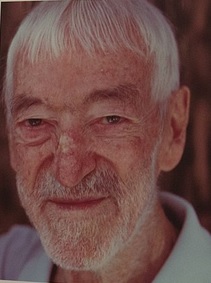Vicenç Ferrer Moncho facts for kids
Quick facts for kids
Vicenç Ferrer Moncho
|
|
|---|---|
 |
|
| Born |
Vicenç Ferrer Moncho
9 April 1920 Barcelona, Spain
|
| Died | 19 June 2009 (aged 89) Anantapur, India
|
| Nationality | Spanish |
| Citizenship | NRI (non Indian Residencial) |
| Occupation | Jesuit missionary, humanitarian |
| Known for | Humanitarian Work |
| Awards | Prince of Asturias Award for Concord (1998) |
Vicente Ferrer Moncho (born April 9, 1920 – died June 19, 2009) was a kind-hearted man from Spain. He was a Jesuit missionary who dedicated his life to helping poor people in Southern India. He started a special mission there. Today, the Vicente Ferrer Foundation continues his important work. It helps more than 2.5 million people in Andhra Pradesh, India, by providing aid and support.
Contents
Vicente Ferrer's Life Story
Early Life and Challenges
Vicente Ferrer was born in Barcelona, Spain, on April 9, 1920. When he was 16, he had to join the military. He served during the Spanish Civil War. After the war, he was held for a short time in a camp in France.
He was later released and returned to Spain. He had to serve two more years in the military. After seven years of military service, he left to study law. However, in 1944, he decided to become a Jesuit, which is a member of a Catholic religious order.
Starting His Mission in India
In 1952, Vicente Ferrer arrived in India as a missionary. He wanted to focus on helping people who were struggling. In 1958, he and his friends started the "Rural Development Association." This group began in Manmad, north of Mumbai.
They started with a small piece of land and a school. Many farmers in the area were very poor. Vicente Ferrer encouraged them to dig wells for water. He told them, "I will pay you with wheat and oil." He also gave them water pumps. They could pay him back slowly, without any extra charges. This group helped build 3,000 wells.
Facing Challenges and Returning to Help
In 1968, an article called "The Silent Revolution" was published. It was in a popular Indian magazine. The Indian government saw Vicente Ferrer's work as a problem. They asked him to leave the country.
But many people supported him. A year later, he was allowed to return to India. He went to Anantapur, a very poor city in Andhra Pradesh. In 1970, he left the Jesuits but kept helping people. He worked with his English wife, Anne Perry, who was a journalist.
When he came back, he started a new project in Anantapur. He set up irrigation systems in a desert area. He taught people a method called "linked brotherhood." This meant that people helped each other dig wells. Once their own well was finished, they would help their neighbors.
In 1969, Vicente founded the Rural Development Trust. This organization helps vulnerable people in Andhra Pradesh and Telangana. They focus on women, children, and people with disabilities. They work to improve life for poor people in rural areas.
The Vicente Ferrer Foundation
Vicente Ferrer started the Vicente Ferrer Foundation in 1969 with his wife, Anna Ferrer. The foundation mainly helps the Dalit caste, who are often treated unfairly. They have done amazing things, like:
- Organizing wells and irrigation systems.
- Funding three hospitals and an AIDS clinic.
- Creating a family planning center and 14 rural clinics.
- Building 1,700 schools and about 30,000 houses.
- Planting over 3 million trees.
The foundation's work has made life better for more than 2.5 million people. In 1998, Vicente Ferrer received the Prince of Asturias Award for Concord from Spain. This award is for people who promote peace and understanding.
Vicente Ferrer passed away on June 19, 2009, at 89 years old. He died from heart and breathing problems.
Honoring Vicente Ferrer's Legacy
Many people and organizations have honored Vicente Ferrer's important work.
In May 2009, Spain created the National Awards for Development Education Vicente Ferrer. These awards recognize schools that teach students about global citizenship and fighting poverty.
In July 2009, an airline called Spanair named one of its planes after him. This was done with the Vicente Ferrer Foundation.
In February 2010, a group nominated the Vicente Ferrer Foundation for the 2010 Nobel Peace Prize. This shows how much his work was valued around the world.
Awards and Recognition
Vicente Ferrer received many awards for his humanitarian work:
- Prince of Asturias Award for Concord in 1998.
- Español Universal (Universal Spaniard) in 1998.
- Ceuta Autonomous City Coexistence Award in 2000.
- Member of the Commission for the Eradication of Poverty of the Government of Andhra Pradesh, in 2000.
- Generalitat of Catalonia St George's Cross in 2000.
- General Council of the Bar Human Rights Award in 2000.
- UNESCO Leading Figure in the History of the 20th century in 2001.
- Grand Cross of the Civil Order of Social Solidarity from the Spanish Ministry of Labour and Social Affairs in 2002.
- Spanish Olympic Committee Olympic Spirit Award in 2002.
- Honorary degree from the Polytechnic University of Valencia in 2000 and from the University of Huelva in 2001.
- Grand Cross of the Order of Civil Merit awarded by the Spanish Government in 2009.
- Catalan of the Year Award 2008 awarded by the newspaper El Periódico de Catalunya.
The Rural Development Trust, which Vicente founded, also received awards:
- Best Ecological Project awarded by the Dutch Government in 1994.
- Labour Gold Medal awarded by the State of Andhra Pradesh in 2000.
- Recognition by the European Commission as the best NGO for helping after the earthquake in Gujarat in 2001.
See also
 In Spanish: Vicente Ferrer Moncho para niños
In Spanish: Vicente Ferrer Moncho para niños

